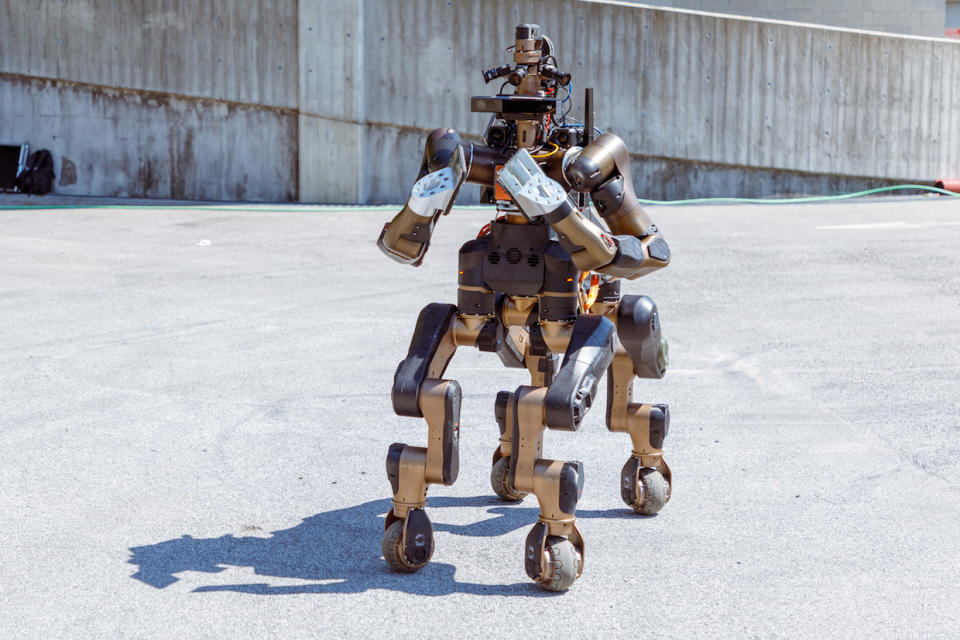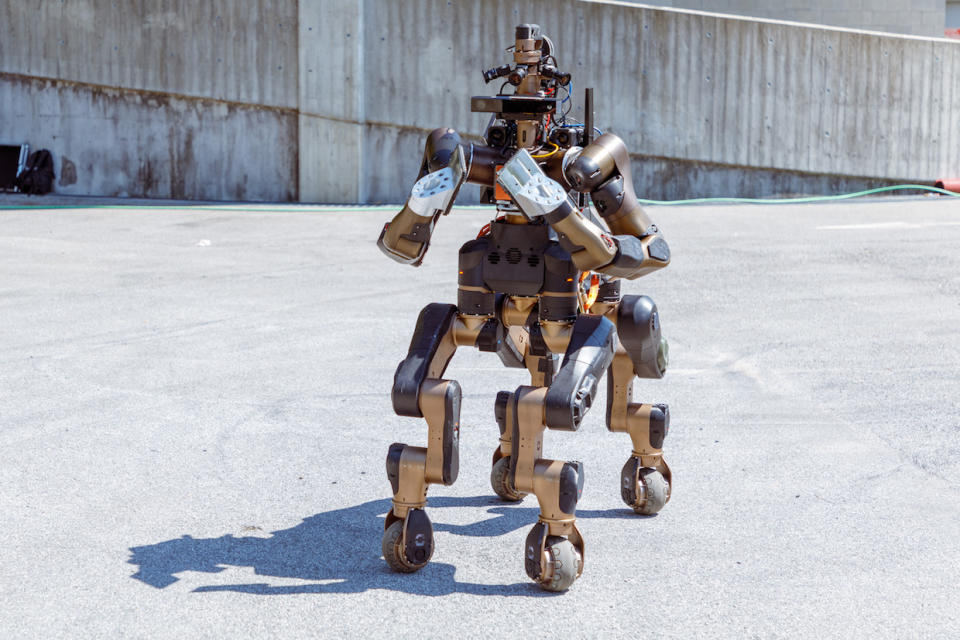Centauro is a disaster-response robot that looks like a horse
Its four legs give it six degrees of freedom.
These days, most robots under development seem to be based on humans. However, a tweak to these designs might actually make robots more effective and stable. Centauro is based on the design of a centaur, hence the name, and its four legs on wheels provide movement and freedom that have been unachievable with comparable bipedal models. Its human-like torso and arms allow it to perform fine motor functions.
The robot stands 1.5 meters (almost 5 feet) tall and weighs 93 kgs (just over 200 lbs). Its skeleton is composed of lightweight metals, and its body is covered in 3D-printed plastic. Batteries can keep Centauro operational for about 2.5 hours. The robot is not autonomous; it requires a human operator, which is a job that takes quite a bit of training.
Disaster response is the main goal for Centauro, and its leg structure give it added mobility in precarious areas and situations. "It will be able to navigate in affected man-made environments, including the inside of buildings and stairs, which are cluttered with debris and partially collapsed," the Centauro Project's website says. Its four legs provide full the much-coveted six degrees of freedom movement.
Centauro is based on Momaro, which was introduced at the DARPA Robotics Challenge by the University of Bonn. It was the top-ranked robot at the competition, so it was only natural that Momaro's ingenious design would provide inspiration for other robots, like Centauro. The platform was built by the Italian Institute of Technology (IIT) and is funded by the EU. The CENTAURO Consortium is coordinated by the team at the University of Bonn that developed Momaro.



